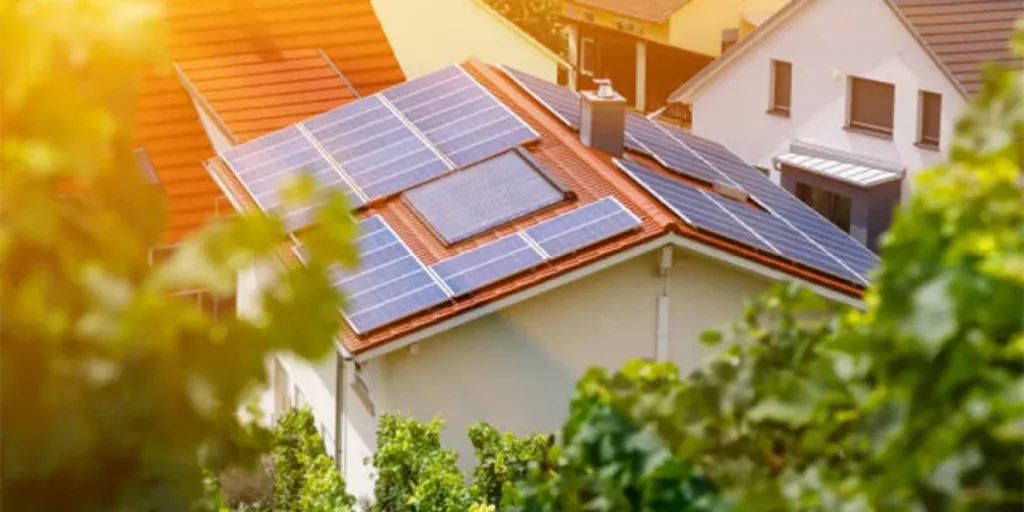Solar controllers act as the brain within a solar system, ensuring batteries are charged in the safest and most efficient manner. In this domain, solar controllers utilizing maximum power point tracking (MPPT) technology are the standout products.
They intelligently adjust the current and voltage under various weather conditions, extracting the maximum amount of energy from the solar panels. This means you can obtain more power and extend the battery life, whether during the heat of summer or during rainy winter days.
This article will offer a brief overview of MPPT solar controllers and their key advantages, as well as a comparison to other popular solar charge controllers available on the market today.
Table of Contents
What is a solar charge controller?
Further info on MPPT solar charge controllers
MPPT vs. PWM solar charge controllers
Wrapping up
What is a solar charge controller?
Solar charge controllers play a vital role in solar PV systems. Their main role is to manage the process of charging the battery from the solar panel, ensuring that the battery operates under safe conditions and avoiding overcharging or over discharging, thus extending the lifetime of the battery.
In addition, the charge controller improves the overall energy efficiency of the system, maximizing the energy collected by the solar panels by ensuring that the batteries are charged at optimal conditions. When it comes to battery protection and energy efficiency, solar charge controllers are the key to a stable, reliable supply of solar electricity.
MPPT (maximum power point tracking) solar charge controllers, as an advanced technology, offer significant system performance advantages over traditional PWM (pulse width modulation) controllers.
By tracking the maximum power point of the solar panel in real time, MPPT charge controllers are able to optimize the conversion efficiency of electrical energy under different light and temperature conditions, especially under unstable or weak light conditions, and this allows them to capture and utilize solar energy more effectively.
This not only improves the energy harvesting efficiency, but also means that the system can generate more power with the same solar input. Therefore, MPPT controllers play a key role in improving the overall efficiency and adaptability of solar systems and are an integral part of modern solar systems.
Further info on MPPT solar charge controllers

Working principle
MPPT solar charge controllers work on the basis of one core objective: to ensure that the solar panels always operate at their maximum power point (MPP) to maximize energy collection. The following is a detailed explanation of this principle:
Maximum power point determination:
Every solar panel has a maximum power point, which is the point at which it can produce the most power at a given combination of voltage and current. This point varies with light intensity and temperature.
The MPPT controller determines the current maximum power point by monitoring the solar panel output and environmental conditions in real time.
Dynamic tracking and adjustment:
The MPPT controller utilizes an algorithm to dynamically track this point and continuously adjusts the operating state of the solar panel to maintain operation at the maximum power point. It adjusts the load impedance of the panel to match the voltage and current conditions at the maximum power point.
Optimization of power conversion efficiency:
Once the optimal operating point is determined, the solar controllers adjust the output of the panels to provide the voltage and current best suited for charging the battery or supplying power to the load.
Adaptability and intelligent management:
MPPT controllers are able to adapt to different environmental conditions, whether it’s a cloudy day, morning, evening, or when the temperature changes, to ensure that the panels are operating at peak efficiency. Some advanced MPPT controllers also have smart management features such as data logging,
In summary, MPPT controllers work by monitoring and adjusting in real time so that the solar panels are always operating at their optimal working condition, thus maximizing energy collection efficiency.
This intelligent and dynamic adjustment methodology allows MPPT controllers to provide better performance than traditional controllers in a variety of environmental conditions, making them particularly suitable for solar applications with variable light conditions and higher efficiency requirements.
Controller parameters and system adaptability

The device parameters of an MPPT solar charge controller determine its suitability for a particular type and size of solar system. Below are some of the key parameters and their suitability you need to consider:
Input voltage range
This is the range of voltages that the solar panel can produce at the maximum power point. Different MPPT controllers are designed with different maximum input voltages.
It must be ensured that the battery voltage generated by the solar panel at maximum light does not exceed the maximum input voltage of the MPPT controller. For high voltage systems (e.g. multiple panels connected in series), it is necessary to select an MPPT controller with a higher voltage range.
Maximum input current
This is the maximum current that the controller can handle. It is limited by the internal electronics. The MPPT controller selected should be able to handle the maximum current generated by the solar panels under peak light conditions.
Maximum output power
This is the maximum power that the controller can provide to the battery or load. The maximum output power of the controller should match the system’s battery and load requirements. For example, larger systems or applications with higher power requirements will require a higher output power MPPT controller.
Rechargeable battery type compatibility
Different MPPT controllers may be designed to work with different types of batteries, such as lead-acid, lithium-ion, nickel-cadmium, and so on. It is important to select an MPPT controller that is compatible with the specific battery type to ensure proper and efficient charging.
Efficiency
This refers to the efficiency with which the controller converts the energy from the solar panel into charging energy for the battery. High efficiency MPPT controllers make more effective use of solar energy, especially in scenarios where lighting conditions are unstable or where energy harvesting needs to be maximized.
A brief example: MPPT controller selection for Residential Solar System
Solar Panel: Multiple monocrystalline solar panels connected in series with a total voltage of around 100V.
Battery type: 12V or 24V lead-acid battery.
Input voltage range: must be able to handle at least 100V or higher input voltage.
Maximum input current: Assuming that each panel produces 5A of current under peak light, a controller that can handle at least 20A of current if there are 4 panels is required.
Maximum output power: To be able to meet the charging requirements of a 12V or 24V battery system, e.g. 500W or higher.
Battery compatibility: Needs to be compatible with the charging characteristics of lead-acid batteries.
MPPT vs. PWM solar charge controllers


MPPT and traditional PWM are the two main technologies for solar charge controllers. They differ significantly in terms of operating principle, efficiency and cost, and each has its own advantages. The following is an analysis of the advantages of MPPT controllers over PWM controllers:
Energy conversion efficiency
MPPT: MPPT controllers operate at the maximum power point of the solar panel, maximizing energy conversion efficiency. Under ideal conditions, MPPT controllers can achieve efficiencies of 90% to 95% and higher.
PWM: PWM controllers are typically less efficient because they only adjust the battery charging voltage and do not ensure that the panel operates at its maximum power point. Efficiencies range from about 75% to 80%.
Adaptation to sunlight
MPPT: In an environment with highly variable light conditions (e.g., morning, evening, or cloudy weather), the MPPT controller makes more efficient use of the available light. It continuously adapts to changing light conditions by adjusting the input voltage to extract the maximum possible energy.
PWM: Comparatively speaking, PWM controllers do not perform as well as MPPT controllers when light conditions change. They are typically more efficient at certain times of the day (e.g. midday) but lose efficiency when light intensity is low.
System compatibility and flexibility
MPPT: Because MPPT controllers can operate over a wider voltage range, it allows more solar panels to be connected in series to produce a higher voltage. This makes MPPT controllers more flexible and effective in large or scalable solar systems.
PWM: PWM controllers are better suited for smaller systems and require the panel voltage to be close to that of the battery, limiting the flexibility of panel configurations.
Cost effectiveness
MPPT: While MPPT controllers have a higher initial cost than PWM controllers, their long-term benefits in terms of high efficiency and better energy harvesting usually make up for the higher cost.
PWM: The relatively low cost of PWM controllers makes them suitable for smaller systems with limited budgets or modest efficiency requirements.
Overall, MPPT controllers outperform PWM controllers in terms of efficiency, light condition adaptability, and system compatibility, and are especially suited for larger solar systems or those with high efficiency requirements. Although more costly, the long-term benefits and performance enhancements offered by MPPT controllers often make the investment worthwhile.
Application scenarios
MPPT solar charge controllers are used in a wide range of application scenarios, especially for those environments with high requirements for energy efficiency and performance:
Large solar power plants: In commercial and industrial grade solar power plants, MPPT controllers maximize the energy output of each solar panel, improving overall system efficiency and power output.
Residential solar systems: In rooftop solar power systems, MPPT controllers can optimize performance under varying weather conditions, especially in areas with large variations in light intensity.
Off-grid solar systems: For off-grid applications, such as homes or campers in remote areas, MPPT controllers can effectively manage the energy conversion between solar panels and batteries to ensure a stable power supply.
Wrapping up
The MPPT controller is a highly efficient solar charging technology designed to maximize the energy output of solar panels. It adapts to varying light and temperature conditions by adjusting the operating point of the panels in real time, thereby increasing the energy harvesting efficiency of the entire solar system.
MPPT controllers are particularly well suited for environments with large variations in light and for large-scale solar systems. Although the initial cost is high, the high energy conversion efficiency it provides can bring long-term economic benefits, making it an ideal choice for improving the performance of solar systems.
Finally, if you are interested in purchasing a solar charge controller for home or business use, you can visit Chovm.com to explore a range of product listings.





 Afrikaans
Afrikaans አማርኛ
አማርኛ العربية
العربية বাংলা
বাংলা Nederlands
Nederlands English
English Français
Français Deutsch
Deutsch हिन्दी
हिन्दी Bahasa Indonesia
Bahasa Indonesia Italiano
Italiano 日本語
日本語 한국어
한국어 Bahasa Melayu
Bahasa Melayu മലയാളം
മലയാളം پښتو
پښتو فارسی
فارسی Polski
Polski Português
Português Русский
Русский Español
Español Kiswahili
Kiswahili ไทย
ไทย Türkçe
Türkçe اردو
اردو Tiếng Việt
Tiếng Việt isiXhosa
isiXhosa Zulu
Zulu